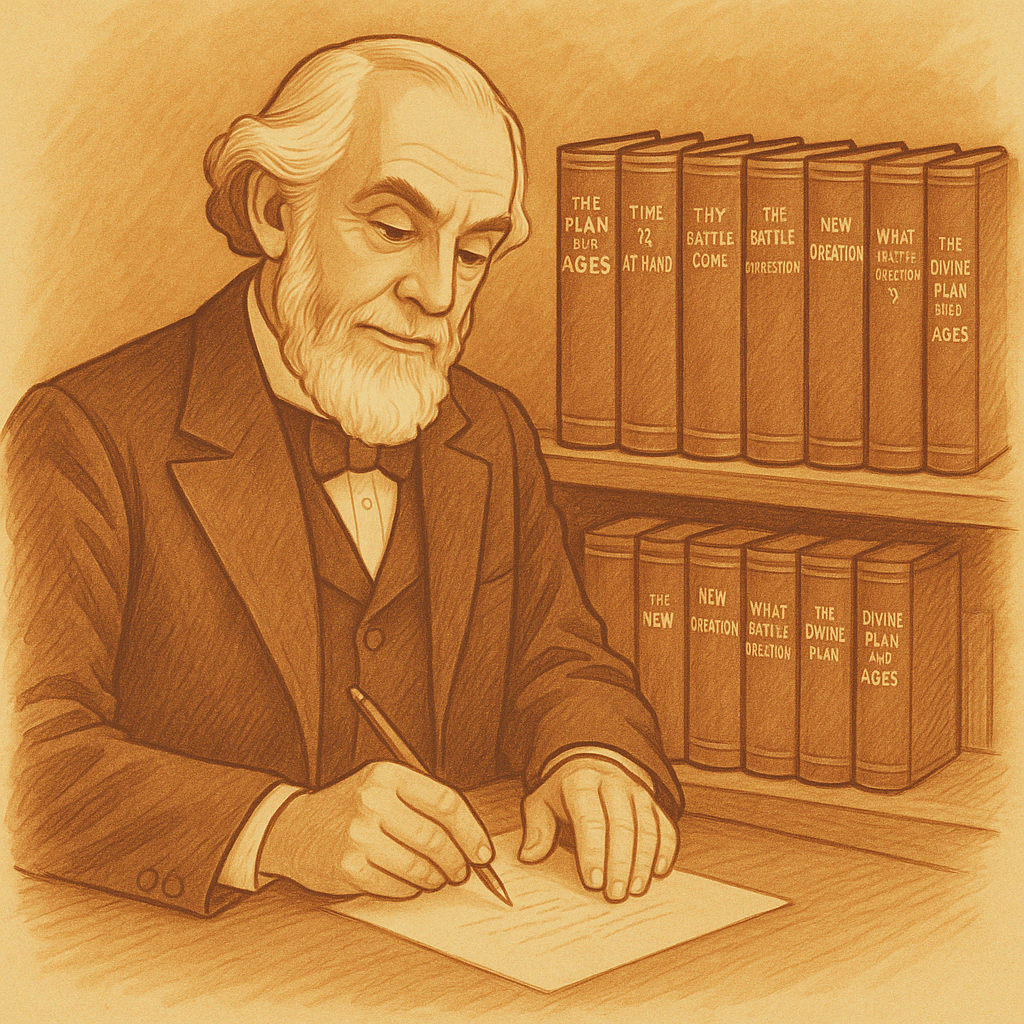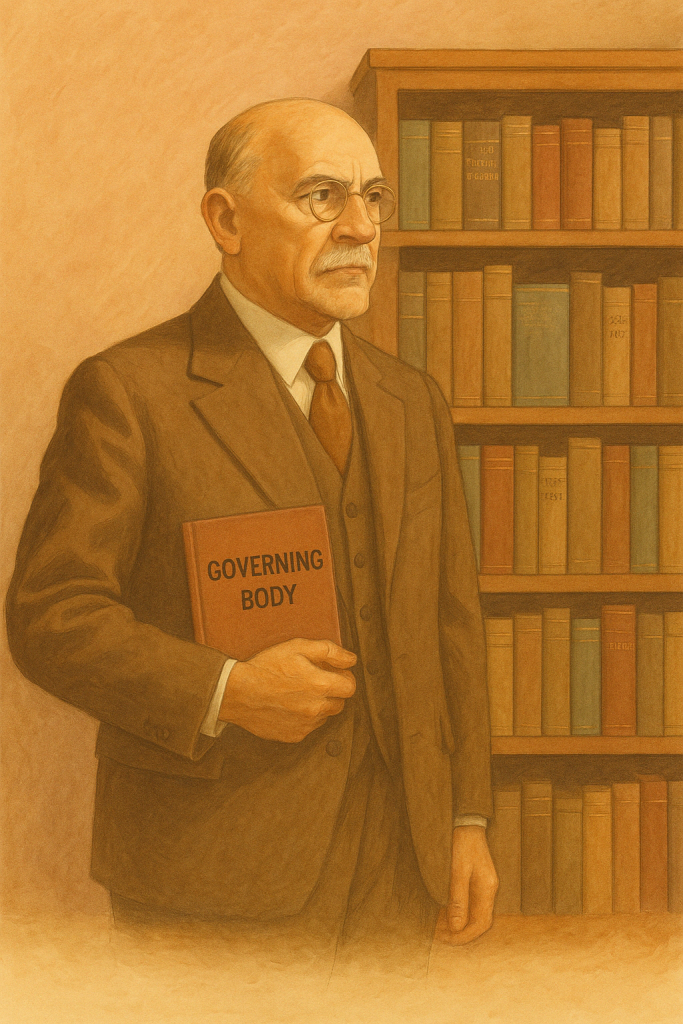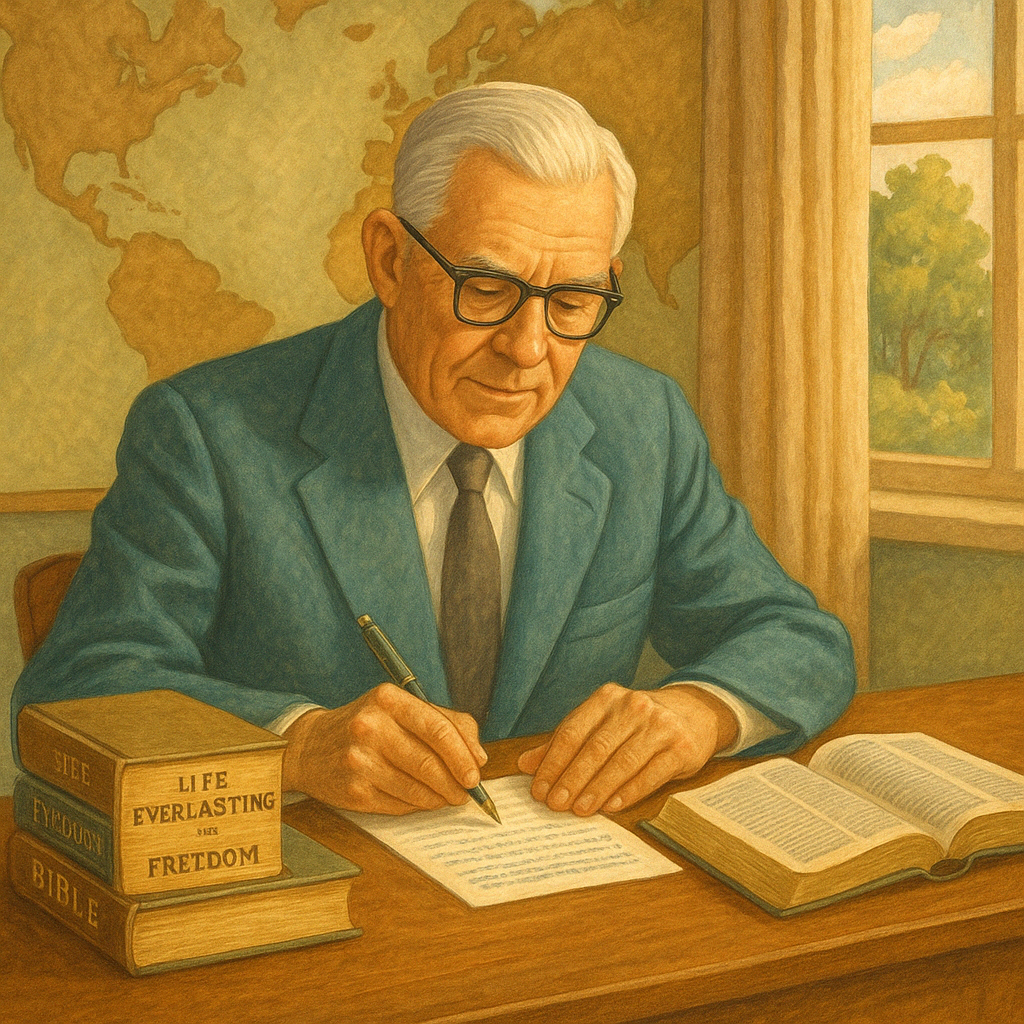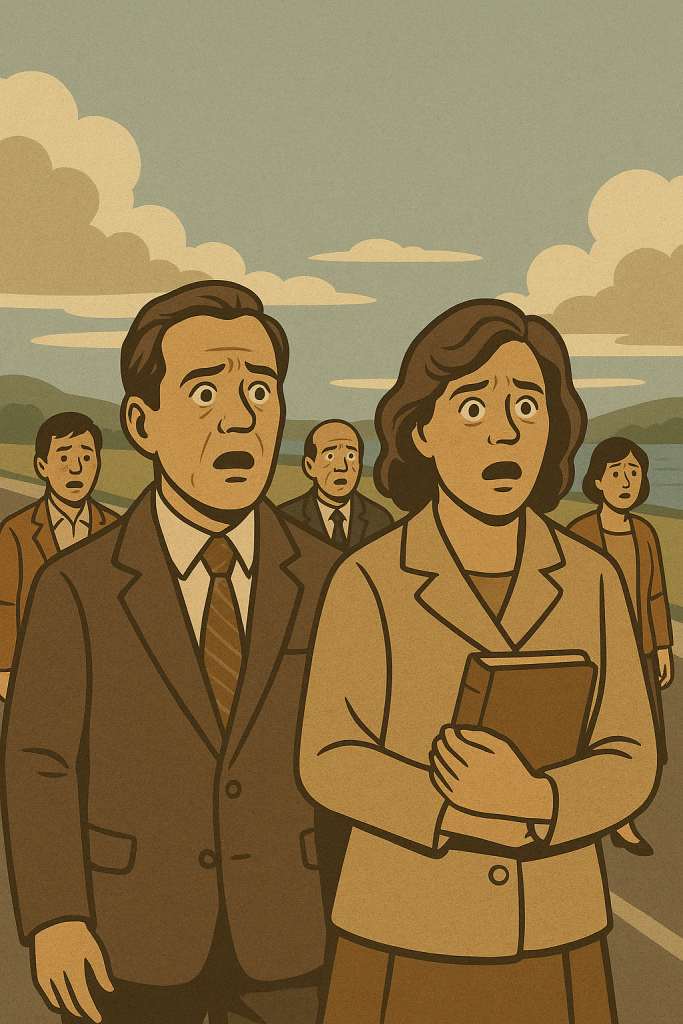Dear brothers and sisters, as we look back on each publication from our history, it’s not with bitterness, but with a sincere desire to understand how we may have been misled—not by Jehovah, but by imperfect men who claimed to speak in His name. We were taught that “the truth” would get brighter, but what we often received were shifting doctrines and broken expectations. Our faith was never meant to rest in an organization, but in Jehovah Himself and in the words of His inspired Scriptures. That’s why many of us are re-examining the foundation we built our faith on—not to tear it down, but to find what is genuine, enduring, and truly led by God’s spirit. The search for truth continues, not within walls of control, but in the freedom Christ promised.

Charles T. Russell’s Era – Magazines and Books
Charles Taze Russell published his major theological works between 1881 and 1916, beginning with Food for Thinking Christians and culminating in the six-volume Studies in the Scriptures series.
- The Battle of Armageddon (1897) – Charles Taze Russell’s Fourth Volume in Studies in the Scriptures
- Unlocking the Early Theology of Jehovah’s Witnesses: Studies in the Scriptures (1886–1917)
- Food for Thinking Christians (1881) – Why Evil Was Permitted and Kindred Topics
- Tabernacle Shadows of the Better Sacrifices (1881) – Charles Taze Russell’s Typological Study
- The Plan of the Ages (1886) – Charles Taze Russell’s First Book
- Three Worlds and the Harvest of This World (1877) – Russell’s First Prophetic Collaboration

Joseph F Rutherford’s Era – Magazines and Books
Joseph F. Rutherford, who succeeded Charles Taze Russell, published over 100 books and booklets between 1917 and 1942, using bold, declarative language to reshape Watch Tower doctrine, promote the name “Jehovah’s Witnesses,” and emphasize the urgency of Armageddon and loyalty to God’s Kingdom.
- Deliverance (1926) – Rutherford’s Follow-Up to The Harp of God and His Vision of Armageddon
- The Harp of God (1921) – Rutherford’s First Book for Jehovah’s Witnesses and the Beginning of a New Era

Rutherford’s Death to 1975 Era – Magazines and Books
Following Joseph F. Rutherford’s death in 1942, the Watch Tower Society entered a new phase of leadership and publication under Nathan Knorr and Fred Franz. This era saw the production of many books and Awake! and Watchtower magazines that reinforced organizational loyalty, end-time urgency, and developing doctrines such as the “Great Crowd” and the emphasis on 1914. As Jehovah’s Witnesses looked ahead to the promises of a paradise Earth—and, later, the expectation of 1975—this period was marked by both hope and growing doctrinal rigidity. Here, we examine the literature that shaped the thoughts, expectations, and spiritual identity of millions during this pivotal time.

Post-1975 to Early 1990s Era – Recovery & Rebranding
After the failed expectations surrounding 1975, the Watch Tower Society entered a period of quiet recalibration. While never formally admitting doctrinal error, leadership subtly shifted focus from specific dates to broader themes of endurance, loyalty, and obedience. Publications emphasized moral purity, organizational authority, and Jehovah’s soon-to-come intervention—without repeating bold time predictions. This era saw increasing control from the Governing Body, the rise of disfellowshipping as a disciplinary tool, and the reinforcement of the “us vs. the world” mindset. Many long-time Witnesses left in disappointment, while others stayed loyal, seeking stability amid doctrinal uncertainty.

Next JW Era: 1995–Present
This era began with the 1995 doctrinal shift that redefined the meaning of “this generation,” loosening ties to 1914 while subtly extending the end-times narrative. In the years that followed, the Governing Body emerged as the central and unquestioned authority, officially declaring themselves the “faithful and discreet slave” in 2012. Watchtower publications grew more simplified and directive, with increased emphasis on obedience, loyalty, and avoiding independent thinking. At the same time, the organization embraced digital expansion through JW.org and JW Broadcasting, enhancing its global reach.
However, this era also brought heightened organizational control, stricter shunning policies, and growing insulation from outside perspectives. Legal challenges—including child abuse lawsuits, governmental investigations, and free speech controversies—began surfacing around the world, prompting increased scrutiny. For many, this period is seen as both a time of media modernization and deep institutional entrenchment.
1874 second coming 1881-publication 1977-publication 1995-yearbook ancient-worthies bible student movement charles-t-russell-era charles-taze-russell doctrinal-changes doctrinal-shift doctrinal-shifts doctrinal-transition early-watchtower early jehovah's witnesses end-times-messaging eschatology failed-prophecies fred-franz governing-body-control great-crowd-shift incoming-world-government invisible-return-1874 joseph-f-rutherford jw-books jw-history jw doctrine changes jw vs bible students knorr-era millennial-dawn no-1975-mention no-hellfire no-trinity obedience-to-organization old-light organization-loyalty post-1975 post-1975-to-1994-era post-rutherford public domain theology pyramidology pyramid prophecy rutherford-era rutherfords-death-to-1975-era studies in the scriptures watchtower origins
